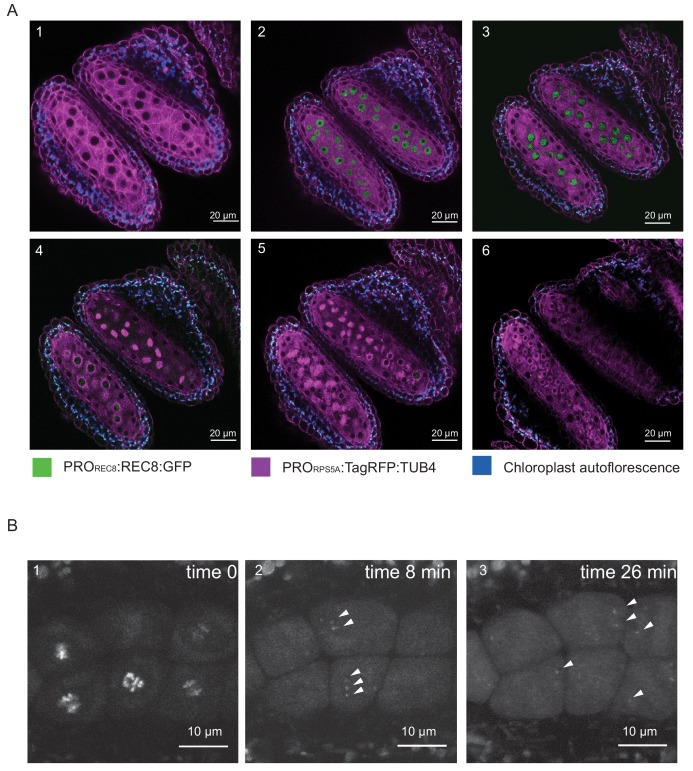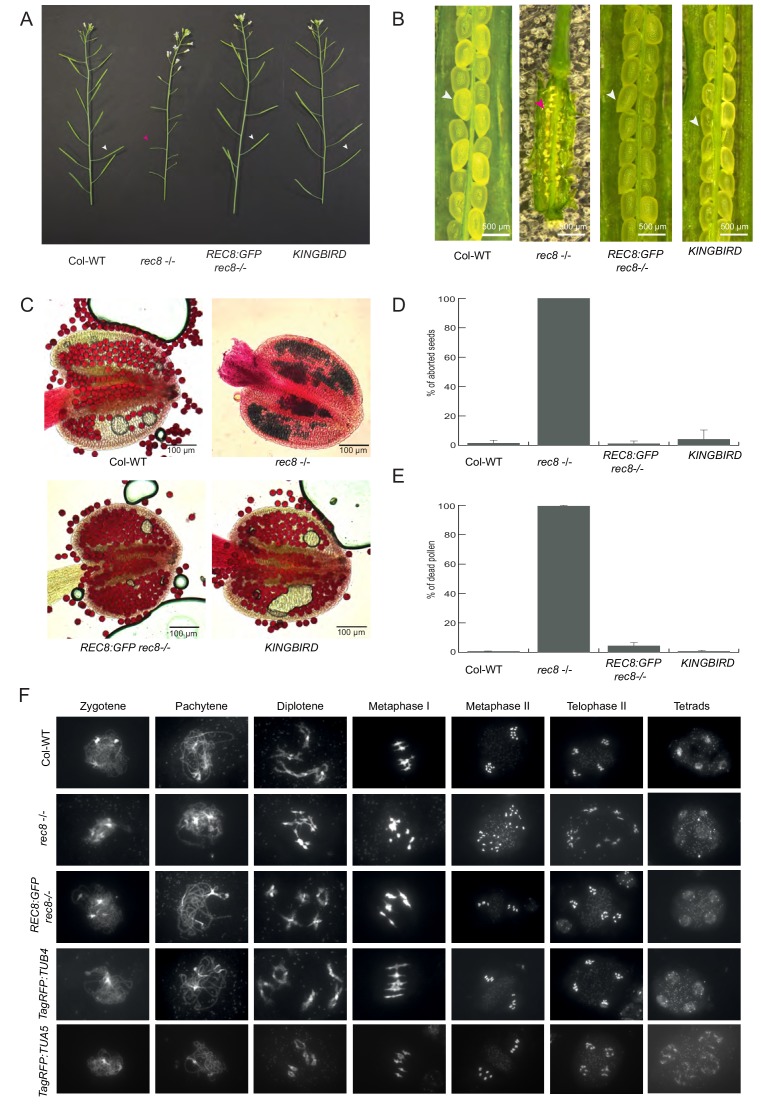(
A) Branches of Col-0 WT,
rec8 -/-, REC8:GFP in
rec8-/- background,
KINGBIRD in Col-0 WT background. While
rec8 -/- shows short, thin and sterile siliques (magenta arrow head),
REC8:GFP and
KINGBIRD present WT-like, elongated and thick siliques (white arrow heads). (
B) Open siliques of Col-0 WT,
rec8 -/-, REC8:GFP in
rec8-/- background,
KINGBIRD in Col-0 WT background. Col-0 WT,
REC8:GFP and
KINGBIRD form round, turgid and fully developed seeds (white arrow heads), whereas
rec8 -/- presents dry and aborted seeds (magenta arrow head). (
C) Anthers stained with Peterson staining (
Peterson et al., 2010). Col-0 WT,
REC8:GFP and
KINGBIRD only produce viable pollen, while high rates of aborted pollen (blue) produced by
rec8 -/- are visible inside the pollen sacs. (
D) Rate of seed abortion (%). (
E) Rate of aborted pollen in (%). (
F) Cell spreads of Col-0 WT,
rec8 -/-, REC8:GFP in
rec8-/- background,
TagRFP-TUB4 in Col-0 WT background and TagRFP:TUA5 in Col-0 WT background. The figure shows a selection of the main meiotic phases.
rec8-/- starts to show defects from diplotene onwards, with the presence of univalent at metaphase I, and the consequent miss-segregation of chromosomes, which leads to the formation of micronuclei and unbalanced tetrads. The meiotic progression is restored in
rec8-/- expressing
REC8:GFP and it is not disrupted in
TagRFP:TUB4 and
TagRFP:TUA5 in Col-WT background. Both of the constructs generated balanced and viable gametes.


